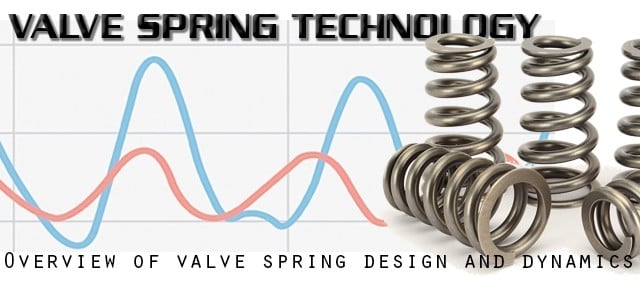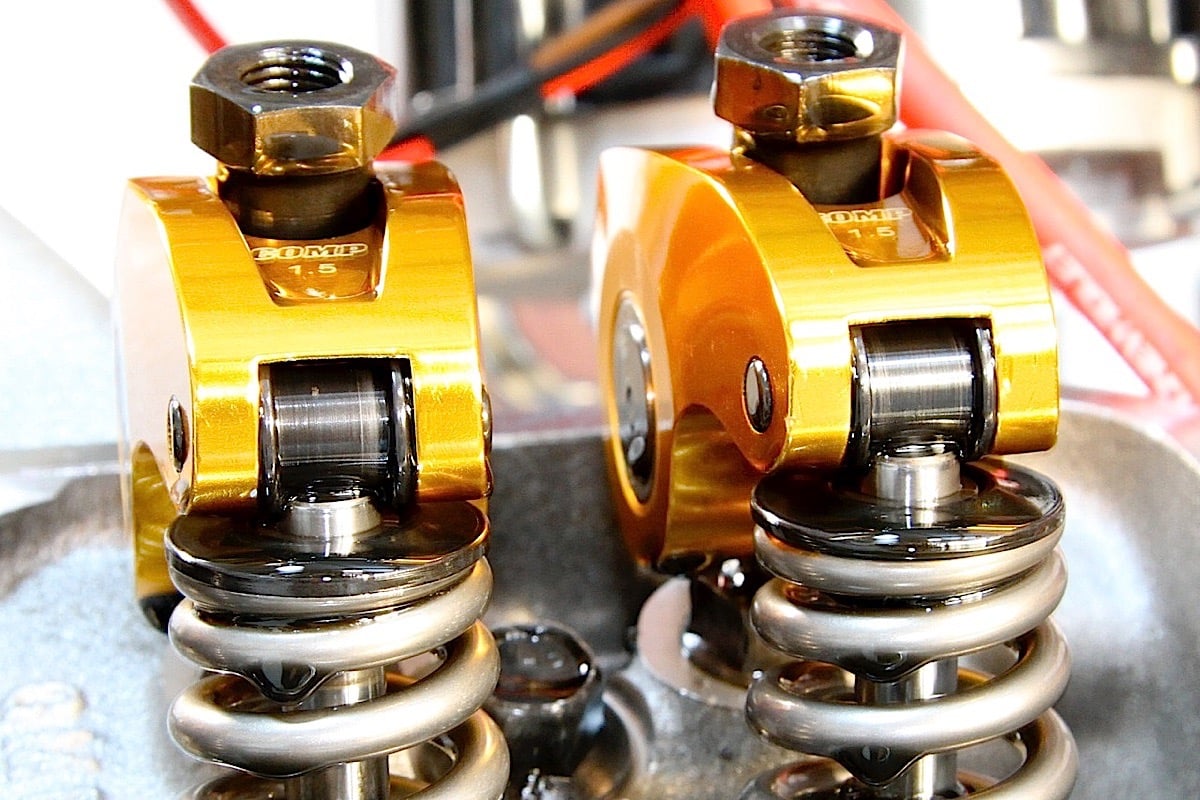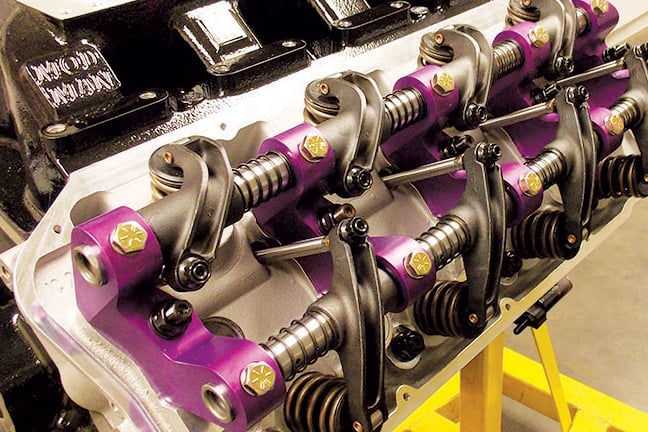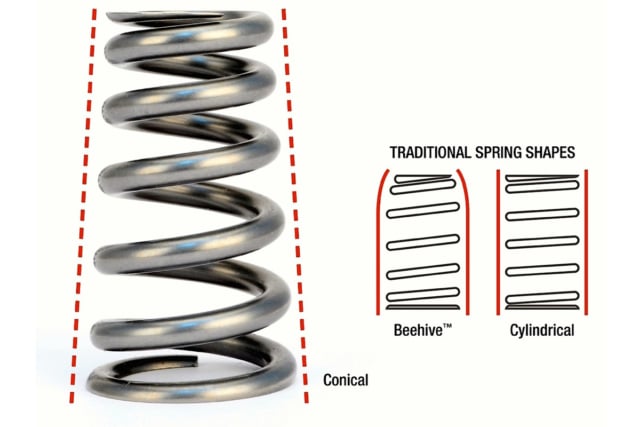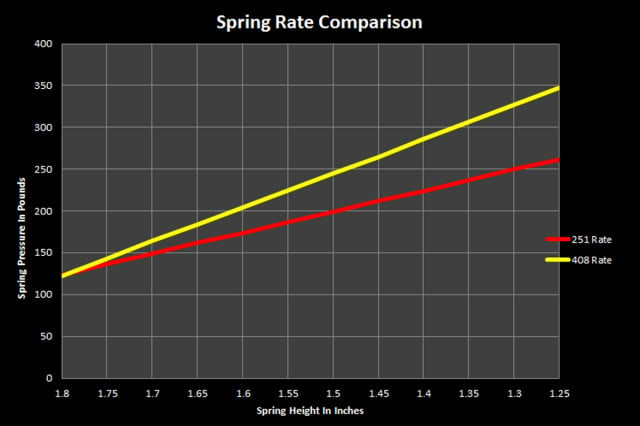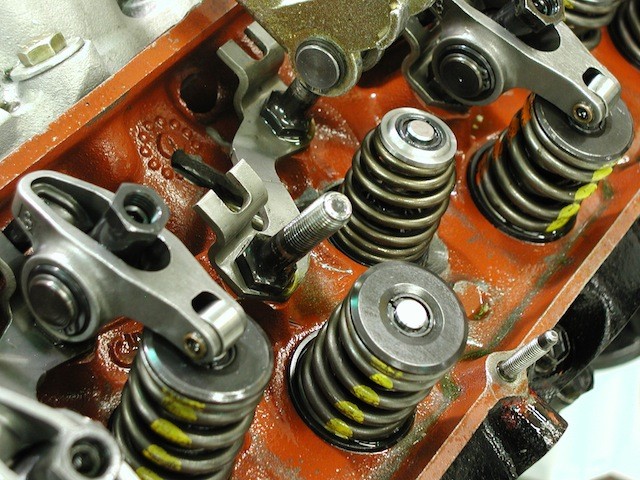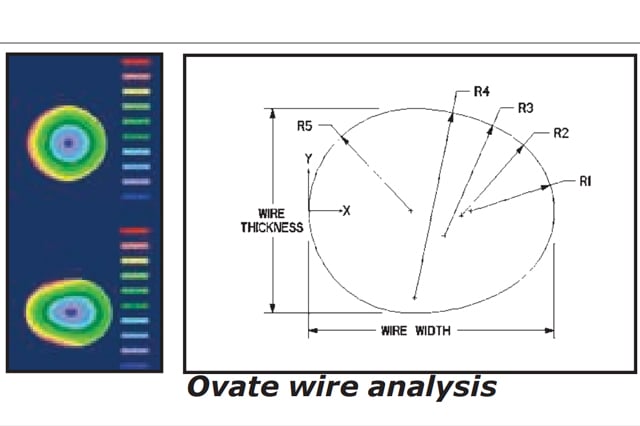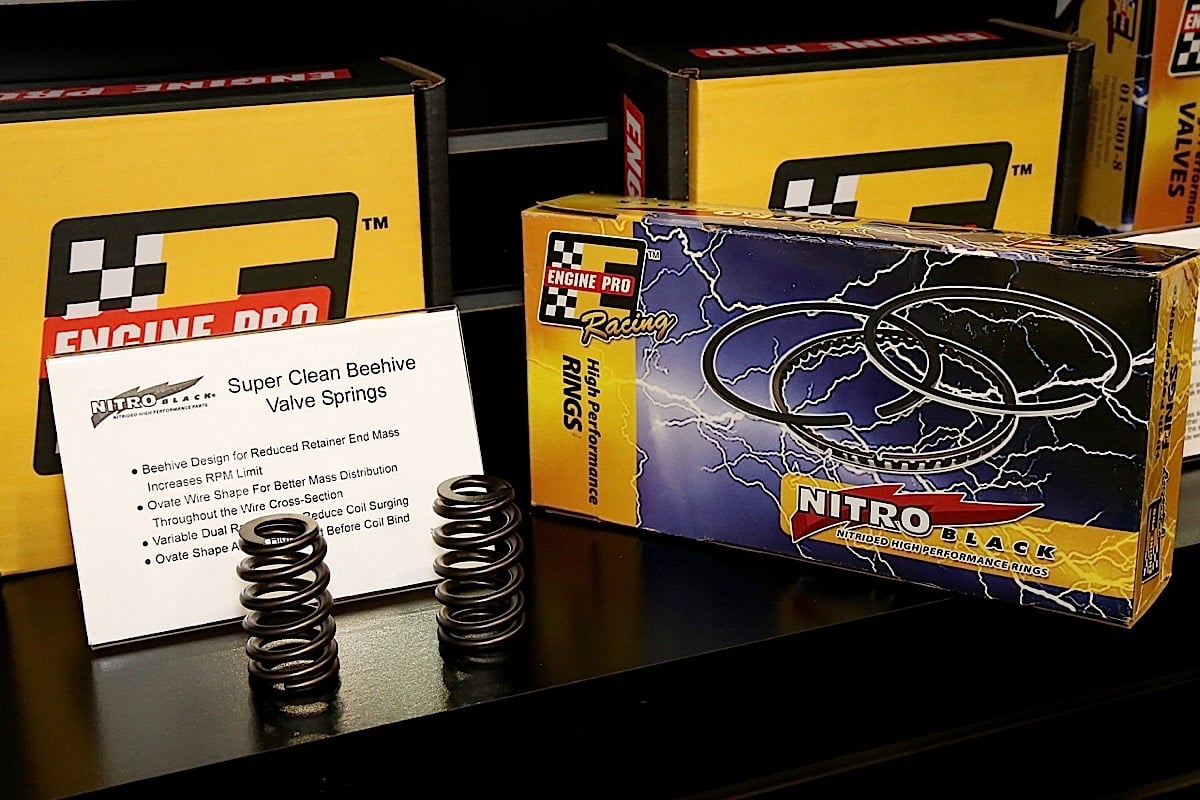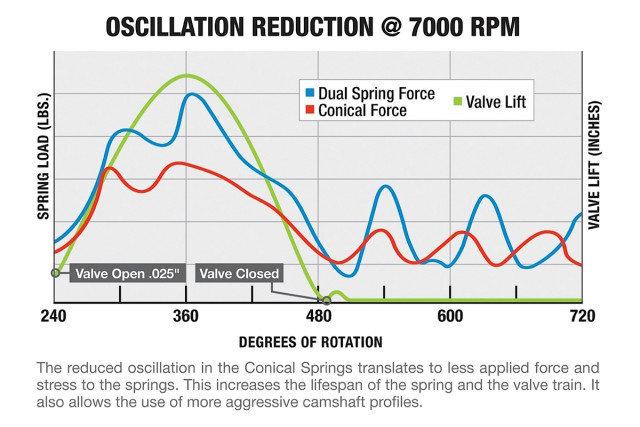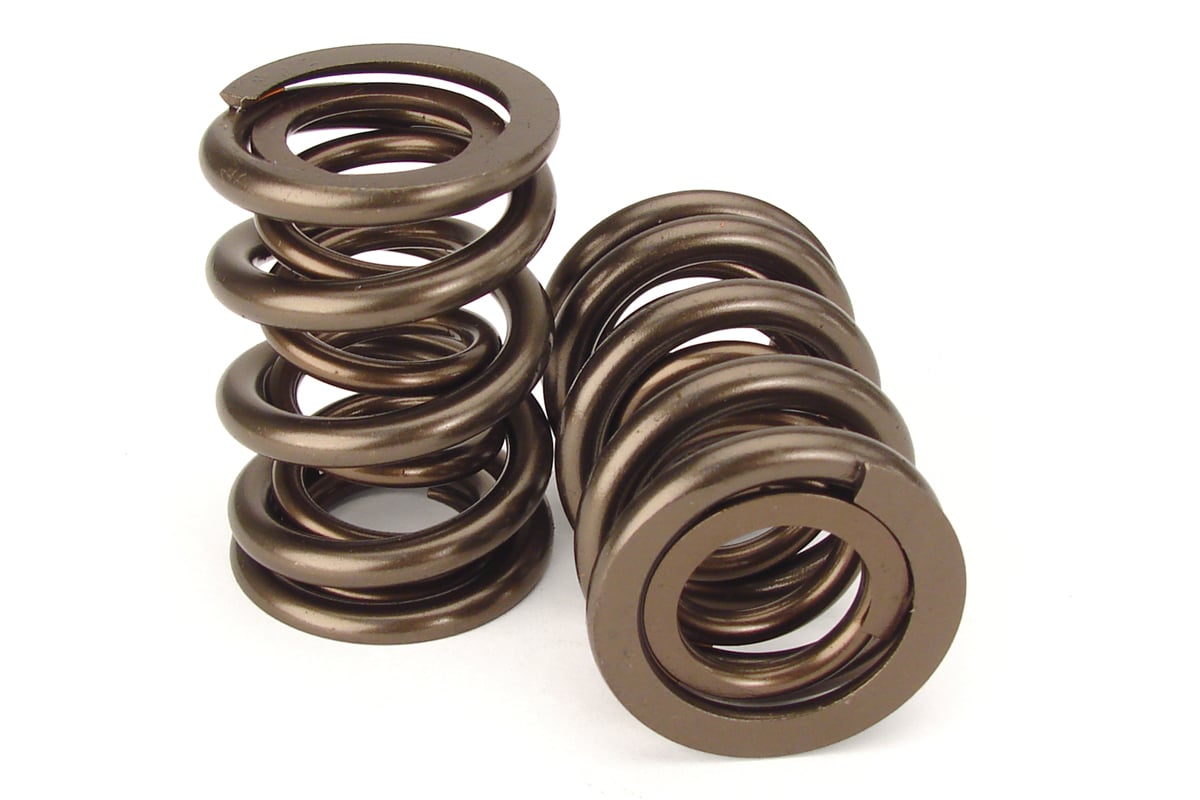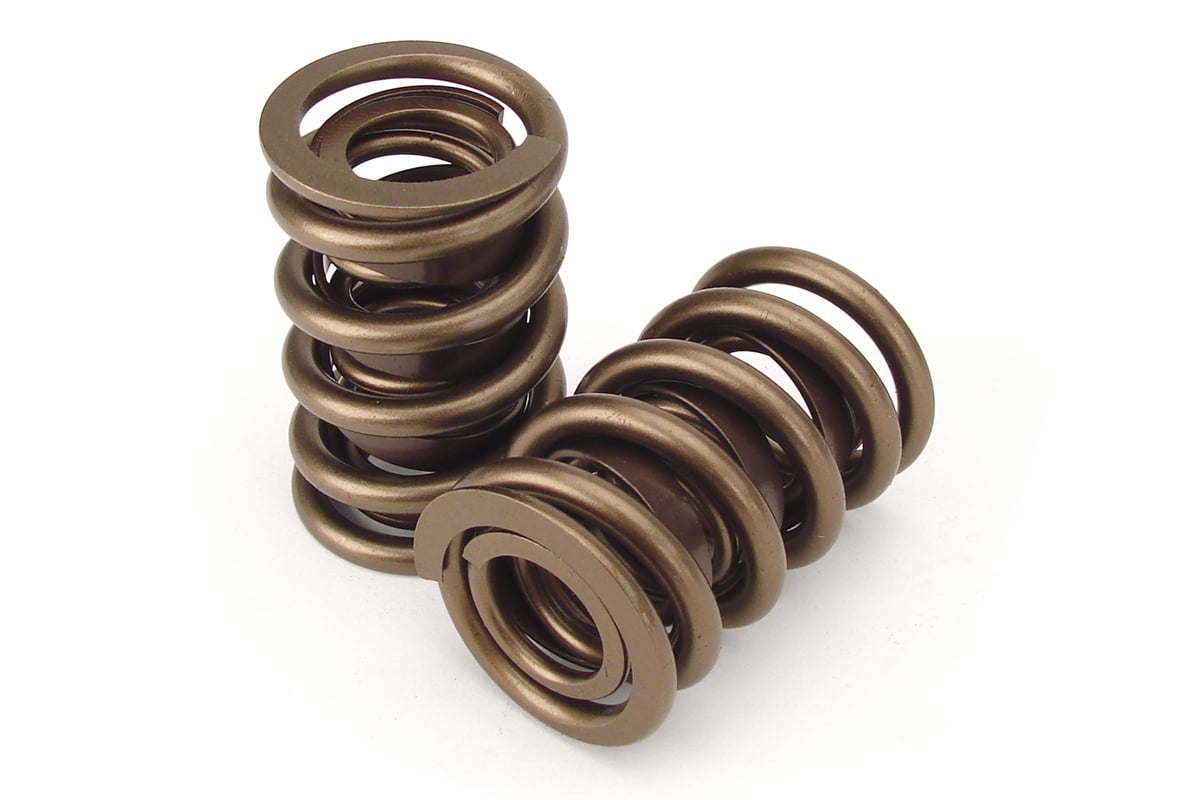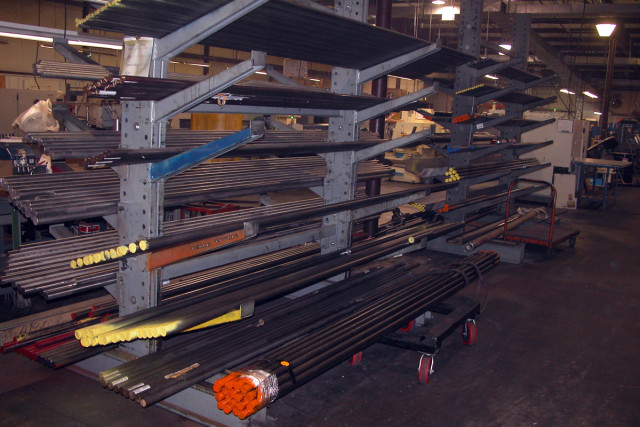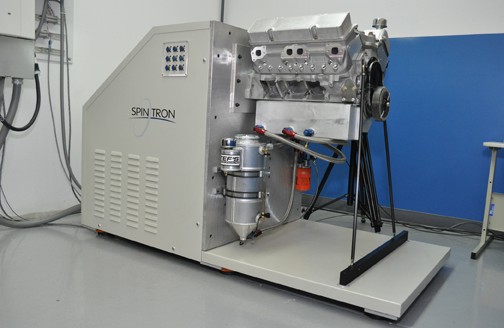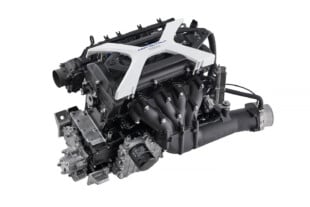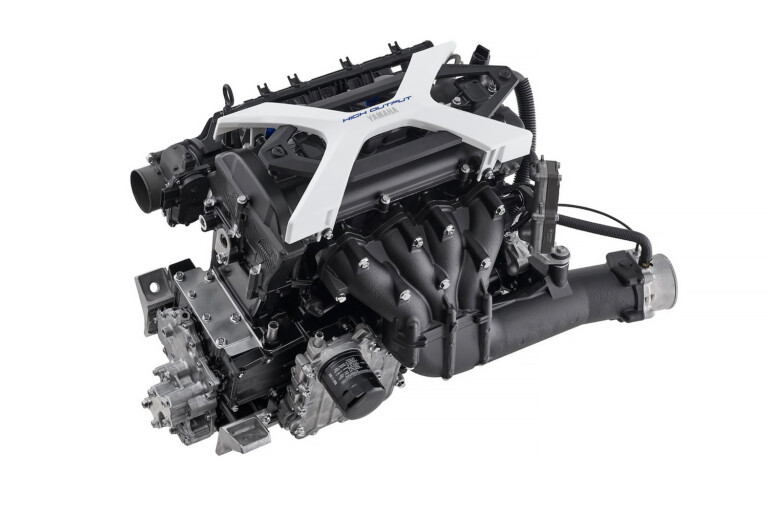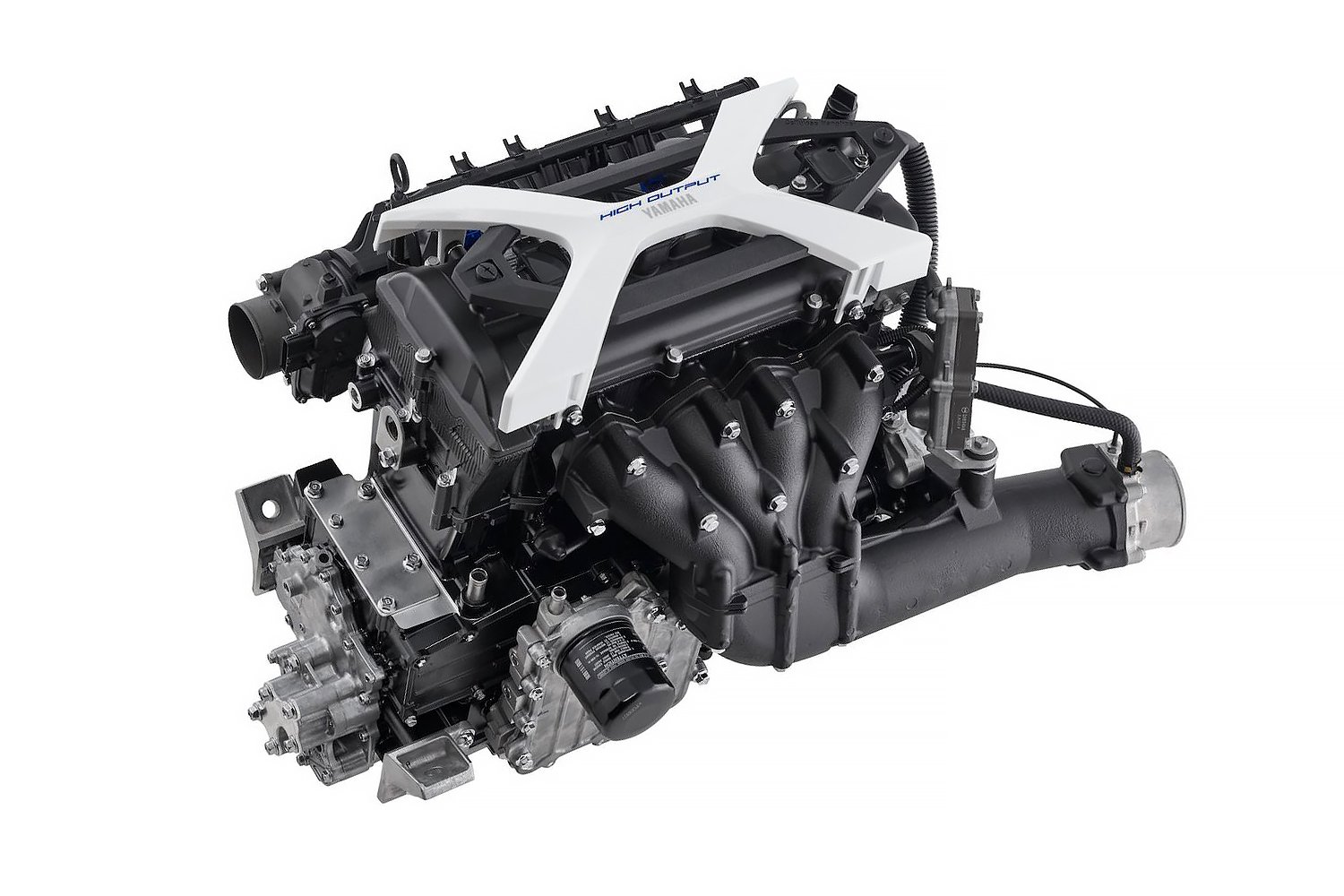Valve springs operate in an extremely violent environment. Not only are they required to perform, but they also need to perform for extended periods of time. Camshaft profiles have become increasingly aggressive as the never-ending search for more performance advances. As a result, the valve spring has seen monumental advances in recent years.
With improved material and processing now available, spring designs and options have significantly increased. A current trend of considering the entire valvetrain system as a whole, including valve springs in their dynamic state, has proved most significant in valve spring advancement.
Engine builders are presented with several options for performance applications. Navigating those options can be overwhelming. With the help from a couple of industry experts, we will take a closer look at those options and the technology behind them.
Controlling The Valvetrain
Valve springs take on the task of controlling the valvetrain. Spring pressure is the major factor that forces its components to stay in contact with the camshaft lobe. Other forces play a role, but without the proper spring pressure the valvetrain becomes uncontrollable.
There are many factors that contribute to proper spring selection. “Cam profile, valvetrain component weight, and RPM obviously play a huge role,” states Trip Manley, vice president of Manley Performance Parts. “The goal is to ‘control’ the valve and prevent ‘valve float,’ which robs the engine of power and can ultimately cause failures.”
Valve spring pressure must be enough to shut the valve and keep it from bouncing off of the valve seat. When valve bounce occurs, dynamic compression is lowered resulting in a loss of power. Bouncing the valve off the seat also can cause valve breakage or piston to valve contact. The result is catastrophic engine failure.
Valve float will occur when the valvetrain gear loses contact with the camshaft lobe. Lifters, pushrods, rocker arms, and valves may lose contact if the open pressure of the spring is not sufficient. Open pressures are critical because the spring force is opposing the inertia of the valvetrain. If inertia of the opening valve overcomes spring force, the spring has lost the ability to keep the valvetrain following the cam lobe profile.
Eric Bolander of Howards Cams cites weak springs and spring harmonics as “the two major causes of roller camshaft and lifter failures.” He says, “Weak springs will allow the lifter to loft over the nose of the camshaft. What goes up must come down. The landing causes damage to the bearings and axle. This will eventually pound the axle out of the lifter body and cause catastrophic failure.”
Spring Design
There are several spring designs available today. Although engineers had the right idea for better spring designs during the early years of the automobile, the manufacturing processes were not sophisticated enough to deliver those designs. Advancements in material, CNC winding machines, and dynamic observation have morphed basic spring designs into the fine-tuned masterpieces we see today.
Cylindrical Springs
The basic valve spring is a single wire, cylinder shaped spring. The ends of the spring are ground flat to sit flush on the spring seat and retainer. However, in a performance application, the single wire spring rarely provides the loads required to control valvetrain operation.
Camshaft lobe profile has the largest role in spring selection. The cam lobe is the basis of valve opening and closing rates, amount of lift, and operating RPM ranges. The lobe profile can directly act on the valve, as in some over-head camshaft applications, or be amplified by rocker arms. Higher rocker arm ratios will amplify the opening and closing rates and lift at the valve.
Isky Racing Cams’ Nolan Jamora points out that advances in spring design and camshaft profile go hand-in-hand: “In the old days, you were kind of stuck with what [spring]material you had, you were stuck with how many coils or what O.D. you had. And the [cam lobe] ramps were a very jerky design. But now with the cam designs you get more lift per degree. It opens a lot quicker, but it’s smoother. So that makes a big difference on how far you can push the spring also. You are getting over one-inch lifts now, which is normal. You get 2:1rocker arms now. And the springs are designed to handle that.”
Performance cam grinds require higher spring rates, which is the amount of weight required to compress the spring at a given distance. Several things affect the spring rate of a single spring: wire diameter, spring diameter, and the number of coils. Increasing the wire diameter will increase the spring rate, while increasing the spring diameter or the number of coils, will decrease the spring rate.
A higher rate spring will provide more pressure over a given distance than a lower rate spring. To illustrate this point consider two springs that have approximately the same seat pressure at 1.800-inches installed height; one at 123 pounds-per-inch and the other 124 pounds-per-inch. The spring with 123 pounds-per-inch seat pressure has a rate of 408 while the spring with 124-pounds-per-inch has a rate of 251. If both springs are compressed to 1.200 inches, the equivalent of .600-inches of lift, the higher rate spring will have more open pressure than the lower rate spring, even though both springs started with nearly the same seat pressure (see graph).
If a single spring is not able to provide the appropriate spring rate, additional springs can be added creating a dual, or even triple spring. Dual springs have an outer and inner spring, while triple springs add a third in the middle. Dual and triple springs are popular for performance applications because of the high loads multiple springs are able to provide.
Beehive Springs
Weight is another important factor in determining spring requirements. The heavier an object, the more force it takes to stop the object when in motion. Spring force must overcome the inertia of the reciprocating parts in the valvetrain, including its own coils. Lighter components require less spring force at a given RPM to maintain control.
In terms of spring design, the Beehive spring can reduce weight significantly compared to a cylindrical design, resulting in higher RPM and less spring load requirements. The top coils of the Beehive springs are wound tighter than the rest of the spring, creating an overall shape similar to a beehive.
“Beehive spring design was initiated to reduce the moving mass, and obviously by reducing the top end of the spring (the moving mass), this allows for a lighter retainer as well,” states Manley.
Billy Godbold, Valvetrain engineering group manager at Comp Cams, adds, “The active mass is reduce by roughly 25 percent by making the top coils smaller, but the effect is more because you need less load due to that mass reduction.”
Reducing the mass of the spring and retainer translates into the ability to turn more RPM. Bob Mitchell, Product Manager at Engine Pro, talks about the benefits of their Nitro Black line of Beehive springs. “The Beehive design allows a reduced retainer end mass which improves RPM potential. The springs go through multiple shot peen processes mostly for stress relief. These springs are heat set so that they actually retain their spring pressure a lot longer, and they utilize ovate wire shape which is much better for distributing the mass throughout the cross-section of the spring.”
Ovate Wire
The shape of the spring wire has also developed over the years. Springs see the highest stress levels on the inside diameter. Round spring wire has the same amount of material on the high stressed inside diameter as on the outside. Ovate wire provides a multi-arc design that distributes more material into the high stress portion of the spring, spreading out the stress load. Ovate wire also allows for higher lifts. “The main advantage of ovate wire is that it requires less space, meaning it allows for tighter packaging of a design,” explains Manley.
(Left) Ovate Wire illustration from PAC Racing Springs illustrates the multi-arc design. (Right) Engine Pro's Nitro Black Beehive springs made with ovate wire.
This is important in high-lift applications. The spring must be able to compress far enough to accommodate valve lift without encountering coil bind — when the coils of the spring are compressed so far that there is no space left between them.
A rule of thumb is to provide a minimum .060-inch of clearance between the coils. However, too much clearance can be detrimental to valvetrain operation as well. Manley states that setting the springs up too far away from coil bind is a common mistake made during installation.
“The old school of thought was, ‘the farther away from coil bind, the better.’ This is not the case. There are high-end race teams that run the springs as tight as .030-inches from coil bind. We have many applications that call for anywhere from .050-inches to .100-inches max,” says Manley.
Jamora says he likes to see more clearance between coils as added insurance. He recommends at least .050-inches from coil bind, but also states that more isn’t an issue “as long as you have sufficient open pressure at the increased installed height.”
Ovate wire is most popular in Beehive designs. Godbold sums up the advantage of this combination by stating it, “allows both higher loads and more lift capacity while more evenly spreading out the ID stress.”
Conical Springs
The newest spring design to hit the market is the conical spring. This cone-shaped spring has a progressive reduction in spring diameter from the spring seat to the retainer. Like the Beehive spring, the upper portion is smaller in diameter resulting in less reciprocating mass in the spring coils as well as in smaller retainers.
In addition to the reduction in weight, conical springs offer a much higher natural frequency than the other designs. Understanding frequency can be daunting for those of us who are not engrossed in the engineering field. Anytime an outside force acts upon the valve spring, a vibrational wave travels through the spring, transferring from one coil to the next. Frequency is a measurement of how many wave oscillations occur in a given time unit. When the frequency of the outside force nears the natural frequency of the spring, resonance occurs dramatically increasing the amplitude of the vibrations.
(Left) Single conical springs (Right) Dual conical springs
Increasing the frequency of a valve spring increases the valvetrain RPM limit while reducing resonance concerns. Dynamic spring oscillations are also reduced due to the progressive frequency of each coil in the conical design. The coils of the conical spring not only are differing in diameter, but the pitch or spacing from coil to coil also differs, resulting in a progressive frequency. This provides a natural damping effect without friction, heat, and wear.
In other designs spring dampers are used. The most common type of damper in cylindrical springs is the ribbon damper. This is a flat piece of wire that uses friction to dampen the frequency. While effective, the ribbon damper creates additional heat in the spring coils and wears on the spring and retainer.
The inner springs of a dual valve spring are designed to provide damping characteristics as well. The inner spring’s interference fit to the outer spring creates a damping effect. This design also creates heat and wear on the high-stressed inside diameter of the spring coils. The conical spring avoids the negative side-effects by damping frequency naturally.
Dual conical designs were recently released by Comp Cams and differ from cylindrical dual springs in that the inner springs do not require an interference fit with the outer spring to provide damping. Manley stated new dual conical designs are in development at Manley Performance as well. (Left) Dual springs use interference fit between inner and outer springs for frequency dampening. (Right) A ribbon damper is also sometimes used.
Spring Material
In addition to spring design improvements, the material used to make the springs has improved dramatically. Not only have design changes allowed for better valvetrain control, but the material has also played a large role.
Spring wire is iron based with different alloying elements added. The primary elements added to spring wire are chromium and silicon. Other elements such as vanadium and nickel are also used. Each element is added to change the properties of the spring wire. Wear and fatigue resistance, and toughness are all properties that can be modified by specifically engineered alloys.
Beyond the chemical structure of spring wire, the processes employed to produce the wire play a very important role. The production of “super clean” wire has upped the ante for spring manufacturers. The cleanliness of spring wire refers to the presence of flaws. By eliminating flaws in the wire, the tensile strength is raised.
“Over the past 25 years, the UTS (ultimate tensile strength) of the alloys we are utilizing have improved approximately 30 percent. This has allowed us to dramatically increase applied stress levels,” states Manley.
According to Godbold, cleanliness is a larger variant in spring wire than chemical makeup. “[Spring] wire of the same chemistry will actually have different UTS (ultimate tinsel strength) values. As the diameter gets smaller, inclusions become very important. … all of the wire used varies more in cleanliness than chemistry, but all will be iron based and typically have chromium and silicon as the primary alloys added. The interesting fact is that the better spring wire can achieve UTS values well above the 300 KSI range that you see in the much higher alloy content tool steels,” states Godbold.
Top Fuel And Pro Mod Springs
Drag racing is a breeding ground for new technologies. Valve spring design and manufacturing has come a long way in the past few decades. Special thanks can be made to the Top Fuel and Pro Mod racing engines that are ever-pressing camshaft and valvetrain limits. If you want to find the latest and greatest in valve spring technology, a quick look at these power-house engines will speak volumes.
Trip Manley states, “Our high stressed lightweight dual drag springs are an excellent example of the technology being utilized today.”
Constructed from ultra clean, high tensile strength material, these springs offer high natural frequency and low active mass allowing engines to turn over 10,000 RPM. Manley’s NexTek series lightweight dual drag race springs, which are popular in Fuel and Pro Mod classes, offer an advanced dual spring design. The dual design reduces heat caused by friction which effectively reduces load loss compared to a triple spring. While triple springs are still popular, advancements in dual spring technology are allowing teams to run higher rate dual springs with less seat pressure.
Comp Cams valvetrain engineer Billy Godbold believes customer education will result in a continuation of this trend. “Educating customers on the importance of frequency at high engine speed will likely result in lower seat loads in the future if engine speed climbs,” he says.
Manufactures are offering very specific materials and processing techniques in an effort to provide the best springs on the market. Godbold states, “There is really nothing that is easily compared to spring wire as the processing — from the time of first melt throughout the last heat set, polish, or micro peen — is extraordinarily refined to produce steel that is far stronger than any other steel used in a performance or racing engine.”
Processing spring wire has become a trade secret for manufacturers. The heat treating and load retention processes are very specific and sometimes proprietary. While the specific techniques may differ, the overall processes reduce surface stress, increase fatigue life, and minimize load loss.
Multiple shot peening processes are used in order to induce a compressive stress into the surface of the spring wire. Inducing compressive stress removes tensile stresses that pull the surface of the spring wire apart, creating cracks and leading to failure. Polishing of the spring wire will remove stress risers, increasing valve spring life and fatigue resistance. Finally, heat-treatment processes are critical for minimizing load loss of the spring.
Nitriding can be used to help endure abusive wear and fatigue in an endurance engine, and allows for a durable surface and improved compressive stress. Bolander says nitriding is also an effective method used to increase the spring rate of an existing spring: “It has been beneficial when the process has been used on an existing spring, to increase the pressure and spring rate. Generally, I have used them in applications where people are running into problems with excessive harmonics caused by big valve lifts, high rpm’s and severe on and off the throttle applications.”
Although all manufacturers use specific standards for spring processing, the verification that each batch of springs is capable of enduring the rigorous duty of controlling the valvetrain is still required. Isky Racing Cams claims to have the first and only of its kind 1,000-mile race simulation using Spintron technology. Every batch and part number of its Tool Room Springs earns a Gold Stripe by passing this ultimate endurance test.
“It has to pass that test with no failure in the batch, no breakage, no load loss, and so each batch that comes in we check them all,” says Jamora. “Depending on what spring it is, we could run the drag simulation which is the warm up, the burnout, backing up, launch, and the run. We will run that simulation several hundred times. If it’s an oval track spring, we have different tracks to simulate practice, qualifying, and then the race. And it’s just like it would be on the track so acceleration, braking, restarts things like that.”
Valvetrain Dynamics: Seeing The System As A Whole
Earlier it was noted that cam lobe profile, component weight, and RPM were the major factors in determining spring requirements. While each of those factors plays a role, it is the dynamic nature of all these as a whole that needs to be considered when selecting springs.
For years the first reaction when valve springs were losing control of the valvetrain was to add more pressure. While this may be the answer, frequency has become a hot topic in valve spring technology in recent years. Godbold states, “All valvetrain systems are extraordinarily dynamic in nature and respond more to frequency than load. Many customers try to select individual components without understanding that changing something like a rocker arm or pushrod changes the frequency of the system. A good valvetrain has to be built as an optimized system.”
A good valvetrain has to be built as an optimized system. – Billy Godbold, Comp Cams
Godbold uses an analogy to stress his point. “If you think of the system as two professional dancers with the cam profile leading by inputting various frequencies into the system, and then all the other components deflecting and then vibrating while the spring follows, the cam’s lead is trying to control everything without going into resonance. All of this is based in the frequency domain.”
Timing of the dynamic waves as they travel through the spring coils plays a large role in keeping the valve seated. “As the spring goes toward max lift not all of the coils close at the same time; so just the frequency of the open coils matter near max lift. On the way back down, the spring’s own frequency is back in play as it has to have the proper timing of the dynamic wave through the spring result in force at the retainer to hold the valve closed,” he continued.
Godbold recalls previous methods and compares the difference when considering frequency: “If you go back 20-plus years, we would ignore the dynamic behavior and keep adding load until everything behaved regardless of frequency. This could work ok, but I’ve seen 10,000-plus rpm engines with 90-grams plus valves run great with 130 pounds on the seat where we would have thought it would need 400-ls with the old development methods.”
With higher frequency and higher spring rates, open pressures are increasing dramatically. For some that is exactly what they want to see. Bolander admits, “When choosing springs in solid roller applications, I tend to be a little old school on spring pressures and rates. I still like the ‘more is better’ to keep the lifter on the camshaft. I have never seen a lifter jump off of the nose of a camshaft because it had too much spring pressure.”
Conclusion
Understanding the role of the valve spring, and the extreme environment it operates in is critical to proper spring selection. Advancement in materials and manufacturing processes have allowed for major improvements in valve spring design.
Jamora gives an example of how materials and processing have changed spring capabilities. “We have a 1.550-inch spring where years ago it would be 550 open pressures. Now the same spring you’re looking at 860 open pressures. They’re taking .800-inch lift. And you need those because there’s a big difference in power adders, twin turbos and things like that. With the added shock to the system you have to have a much better spring,” he says.
However, the most recent advancement in valvetrain dynamic design continues to carry engine performance to new levels. Godbold sums up the latest in spring technology: “I’ll go back to the system versus component approach and the understanding that optimizing frequencies is more important than all the other advancements in dynamic valvetrain systems. Also, we see major advancements coming with lower mass valve springs as new material and design options become available. Getting on a Spintron and actually testing different packages is a huge step many racers don’t see the value in now, but it could be just as revolutionary as wind tunnels were to racing a few decades ago.”



